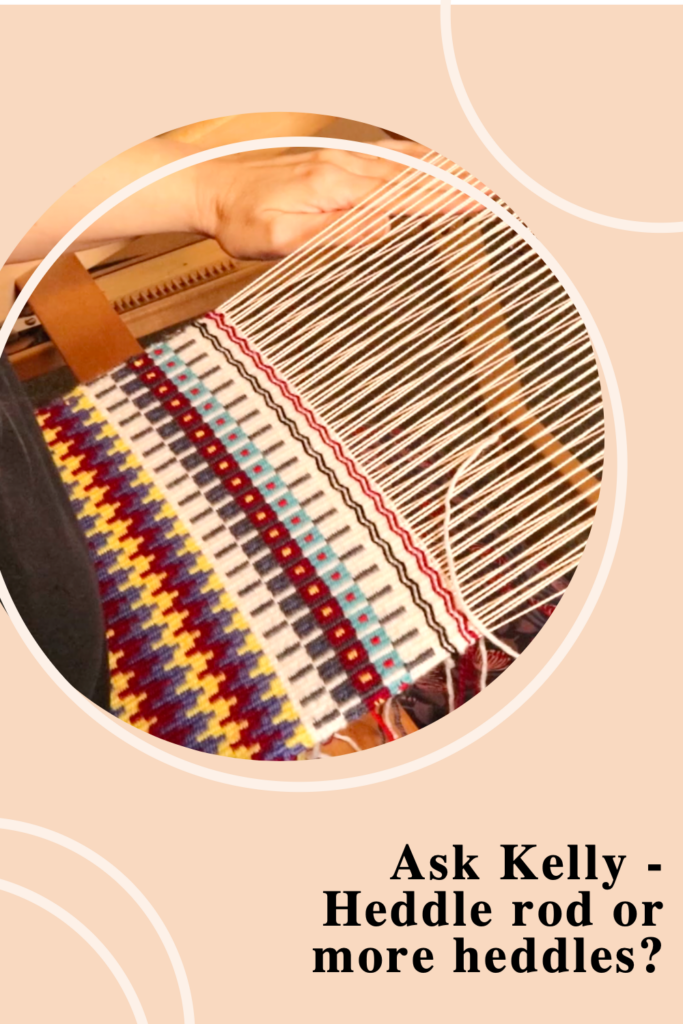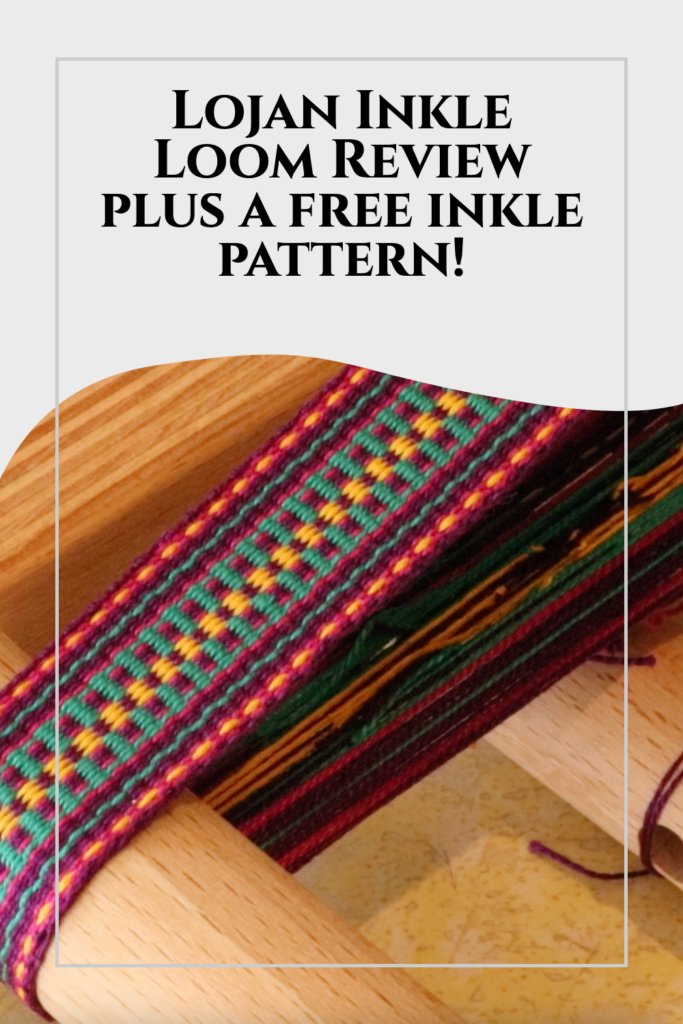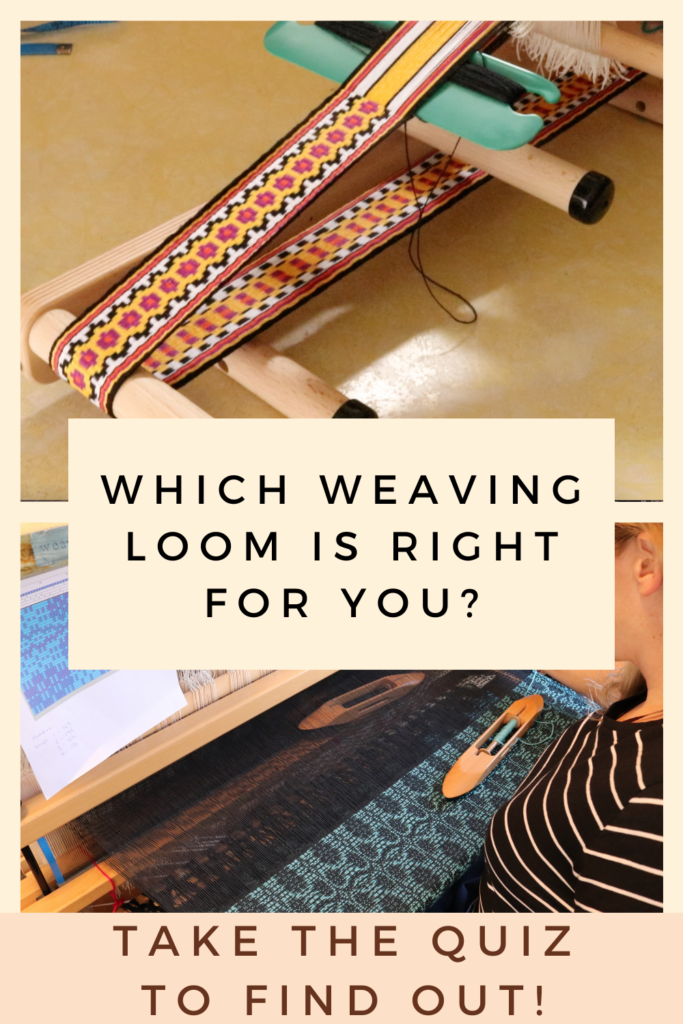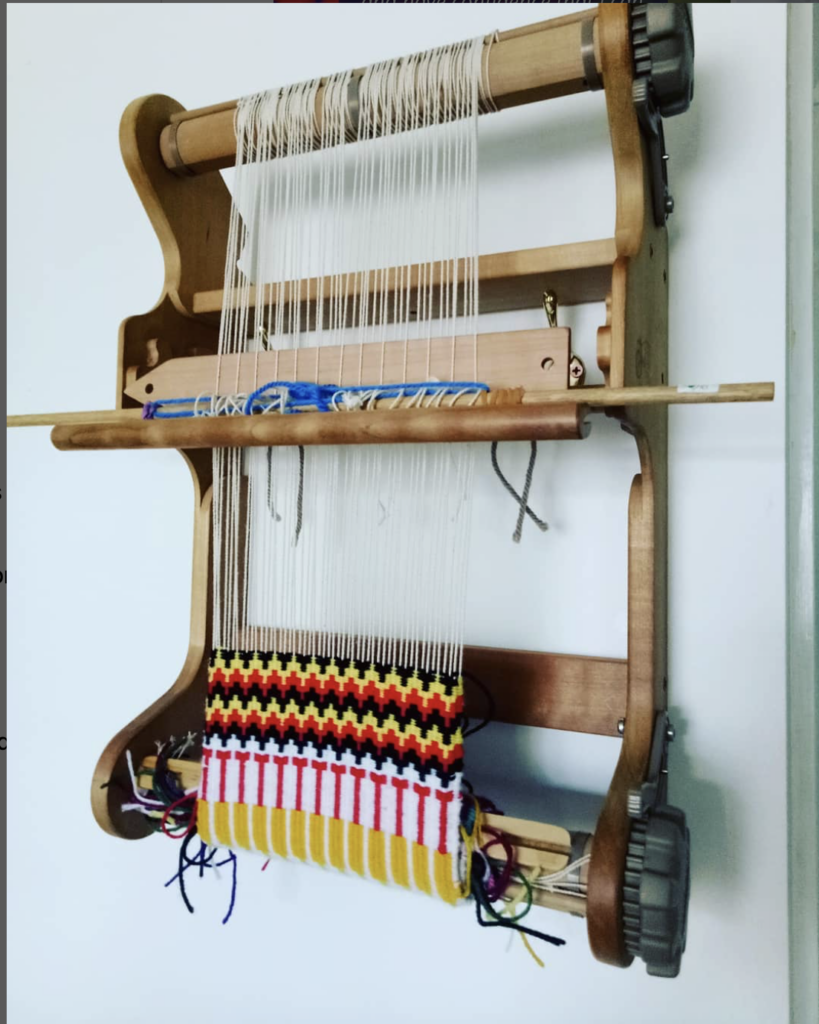Lojan Flex Rigid Heddle Loom Review: My Honest Thoughts
I’m so excited to share my review of the soon to be released Lojan Flex Rigid Heddle Loom! Now that I’ve had some time to weave with it, I have plenty to say about its features, benefits, and what you should know before adding it to your weaving loom collection.
First Impressions & Setup
Right out of the box, I noticed some interesting differences with this loom. One of the first things that caught my attention was the metal warping rod—a great feature held in place by texsolv cords. This keeps the rod steady while warping, making the process easier and more secure. If you haven’t already, I recommend checking out my assembly video before diving into this review, as I explain all the parts in more detail.
The loom also comes with little rubber feet that do a great job of keeping it stable on the table without clamping! I pulled the loom out a little so that the back rubber feet were over the edge of the table, keeping it from moving as I was direct warping. That’s a nice touch for those who prefer to warp without extra setup hassle.
Warping the Flex Loom
For my first project, I used lovely variegated green wool, alternating with a soft pink. I chose to use direct warping, and I have to say, the process was smooth. One of my favorite warping techniques is using two warping pegs to minimize yarn waste—a little trick I always recommend!
As I started winding on, I noticed that the texsolv cords played another helpful role. When rolling the warp onto the back beam, the cords held the apron rod in place, preventing shifting and ensuring an even tension. When it was time to start weaving, I simply slipped the cords off and let them hang out of the way until next time.
The plastic warp separators that come with the loom are similar in size to traditional cardboard sticks, but a bit more durable. Still, my personal favorite remains brown craft paper, which I use repeatedly for superior warp separation.
Why I Recommend a Stand
Now, let’s talk about comfort. I typically weave with a stand when using a larger loom, and after working with the 50 cm Flex Loom, I highly recommend getting one! Without a stand, I found the weaving angle a bit awkward, making my arms work harder than usual.
Lojan does offer foldable, height adjustable stands, which can be packed away easily. If you’re investing in this loom, I’d suggest grabbing the stand along with it to make your weaving sessions more enjoyable!
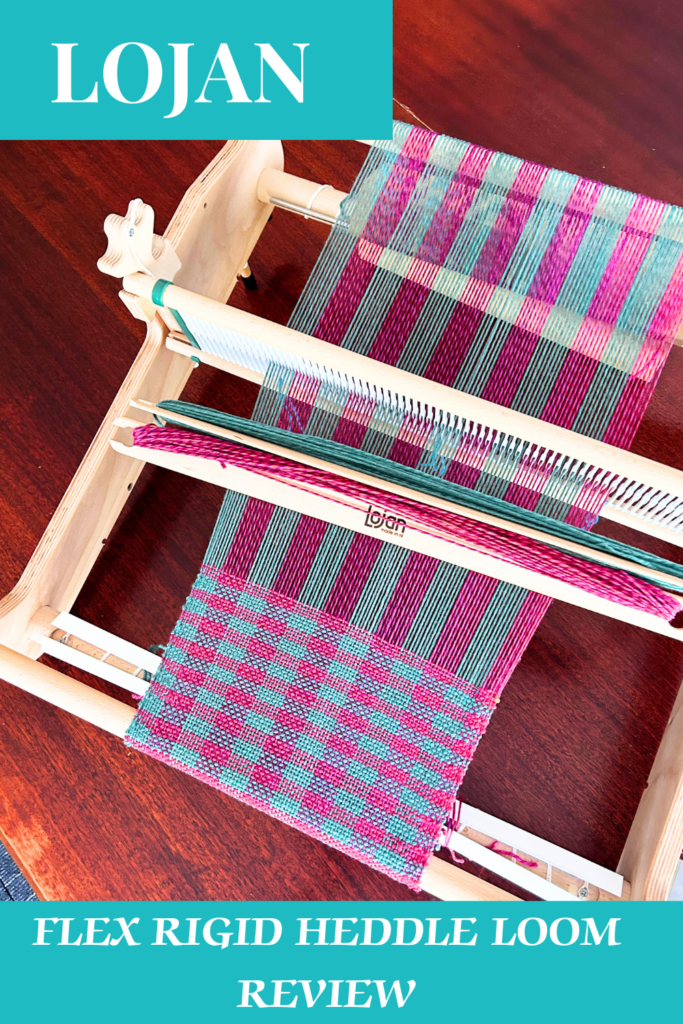
Tensioning: A Standout Feature
One of the biggest highlights of the Lojan Flex is the tensioning system. Just like their inkle loom, which I also love, the tensioning is simple, seamless, and smooth. The loom has front and back bars in addition to the warp and cloth beams, helping to maintain excellent tension throughout the weaving process.
If you’ve ever struggled with keeping tension even, you’ll appreciate this design. Plus, it’s very user-friendly for those with hand or wrist issues, making adjustments easy without strain.
Innovative Rigid Heddle Design
Another unique aspect of this loom is its modular rigid heddle design. Instead of a single, fixed heddle, this loom features individual plastic sections that fit together. This means you can:
- Mix and match different heddle sizes for varied setts.
- Swap out sections instead of buying an entirely new rigid heddle.
- Customize your setup for thick-and-thin weaving with a variety of yarns (similar to a variable dent reed).
I found this to be a super clever feature that adds more options to the weaving experience!
Weaving Experience & Final Thoughts
Initially, I tried weaving with the loom flat on the table, using the extra dowels at the back to create a slight incline. However, I quickly realized that the breast beam and back beam sit quite high, making it a bit tricky to get the right angle without a stand. This reinforced my recommendation—if you’re using the 50 cm size, a stand will make weaving much more comfortable!
Overall, I’m really impressed with the Lojan Flex Rigid Heddle Loom. The smooth tensioning, modular heddle system, and well-thought-out features make it a fantastic option for weavers looking for a high-quality, innovative loom.

What’s in the box?
Whether you purchase the 30cm or 50cm Flex, you will receive:
- Loom parts to assemble, including screwdriver for simple assembly (check out my assembly video here)
- A 7.5 heddle reed and heddle sections
- 2 stick shuttles
- Direct warping peg and clamp
- Heddle hook for threading
- Warp separators
- Apron rod metal rods and texsolv cords
Optional extras
- Stand
- Additional rigid heddle frames and heddle segments, available in sizes 2.5 dpi – 15 dpi.
- Pick up sticks
- Additional warping pegs and stick shuttles
Even more options!
The Flex can be used purely as a rigid heddle loom but it can also be much more than that! Shortly there will be the option to upgrade the regular Flex to either a 4 or 8 shaft loom through the purchase of conversion kits. Reverting back to the rigid heddle loom is quick and easy so you can weave what you want, when you want!
The Flex is available now for pre-order (March 2025). If you’re in Australia you can re-order through me 😉 or if in the US, check them out at the Woolery. If you are interested in the Lojan Inkle Loom I have a review of that here.
Want to see the loom in action? Check out the review video here –
Have any questions about the Flex Loom? Let me know in the comments below! And don’t forget to check out my assembly video for a closer look at how this loom comes together.
Until next time…
Happy weaving! 🎨✨



